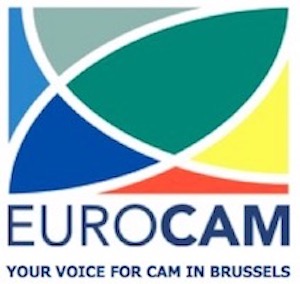CAMbrella and CAM2020
It is a remarkable fact that one out of two EU citizens now use complementary and alternative medicine (CAM). Throughout the European Union, people are seeking more natural and gentle healing methods and increasingly favouring the provision of CAM within existing healthcare systems.
The CAM2020 report describes the characteristic features of CAM, reviewing its holistic and individualised approach, its ability to harness a person’s innate healing capacity, its focus on salutogenesis and its emphasis on the therapeutic relationship and prevention, self-care, health literacy, and patient empowerment.
In the European Union, CAM is practised by approximately 145,000 doctors dually trained in conventional medicine and a particular CAM modality, and around 160,000 trained Medicine CAM practitioners (with or without statutory regulation) practising various CAM modalities. This means there are about 65 CAM providers (30 dual-trained doctors and 35 CAM practitioners) per 100,000 inhabitants compared to the 475,000 general practitioners (GPs) working in the EU, equating to about 95 GPs per 100,000 EU citizens. These figures demonstrate a vast, largely untapped reserve of CAM healthcare provision across the EU. This is a resource that citizens wish to see fully developed and utilised.
Although many Europeans use CAM, there is a vast diversity in its regulation across the EU determining who can practise CAM, what qualifications are required, and how services are offered and financed. This patchy provision means that citizens experience practical and attitudinal barriers that limit their access to and use of CAM. In order to redress these inequalities, a pan-European process to instigate an appropriate regulation of providers of CAM throughout the EU should be initiated as soon as possible. This process should consider the full extent of the scope of CAM modalities across the healthcare spectrum, from general health maintenance and education to CAM treatments of specific illnesses. This process should run in parallel with practical measures taken to integrate CAM modalities into the healthcare systems of every Member State, a requirement recommended by the World Health Organization (WHO).
The availability of CAM products in the EU, including homeopathic, anthroposophic, herbal, and Asian medicinal products, is increasingly being threatened by unharmonised, onerous EU requirements and national regulations that are leading to prohibitive costs for manufacturers or effectively removing traditional medicines from the market altogether. Reducing these CAM products' availability thwarts European citizens' growing demand for more natural, health-enhancing, low-risk medicinal products and food supplements. It also drives people to purchase unregulated products over the internet, which is inherently dangerous. Reducing overly formalistic and economically prohibitive burdens is essential in creating registration dossiers for CAM medicinal and food status products.
The CAMbrella report confirms that European research in CAM is limited and that there is almost no significant investment by any EU Member State in CAM research. The pitiful level of public investment in CAM research in Europe starkly contrasts relatively substantial investments in Australia, Asia, and North America. Including further CAM research in national health research strategies and especially in the EU research programme Horizon 2020 is essential.
Sources:
CAM2020 report https://cam-europe.eu/library-cam/cam-publications/
